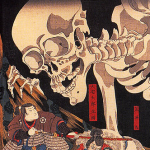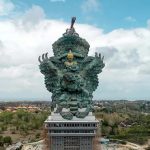 Weird Stuff
Weird Stuff  Weird Stuff
Weird Stuff  History
History 10 Times Trickery Won Battles
 Technology
Technology 10 Awesome Upgrades to Common Household Items
 Misconceptions
Misconceptions 10 Hilarious (and Totally Wrong) Misconceptions About Childbirth
 Weird Stuff
Weird Stuff 10 Warning Labels That Exist Because Someone Actually Tried It
 Health
Health Ten Confounding New Inventions from the World of Biomedicine
 Creepy
Creepy 10 Death Superstitions That Will Give You the Creeps
 Movies and TV
Movies and TV 10 Movies That Get Elite Jobs Right, According to Experts
 Weird Stuff
Weird Stuff 10 Times Real Laws Were Based on Bizarre Hypotheticals
 Animals
Animals 10 Inspiring Tales of Horses Being Human
 Weird Stuff
Weird Stuff 10 Typos That Accidentally Changed History
 History
History 10 Times Trickery Won Battles
 Technology
Technology 10 Awesome Upgrades to Common Household Items
Who's Behind Listverse?

Jamie Frater
Head Editor
Jamie founded Listverse due to an insatiable desire to share fascinating, obscure, and bizarre facts. He has been a guest speaker on numerous national radio and television stations and is a five time published author.
More About Us Misconceptions
Misconceptions 10 Hilarious (and Totally Wrong) Misconceptions About Childbirth
 Weird Stuff
Weird Stuff 10 Warning Labels That Exist Because Someone Actually Tried It
 Health
Health Ten Confounding New Inventions from the World of Biomedicine
 Creepy
Creepy 10 Death Superstitions That Will Give You the Creeps
 Movies and TV
Movies and TV 10 Movies That Get Elite Jobs Right, According to Experts
 Weird Stuff
Weird Stuff 10 Times Real Laws Were Based on Bizarre Hypotheticals
 Animals
Animals 10 Inspiring Tales of Horses Being Human
10 Intriguing Facts from Japan’s Kobe Yamaguchi-gumi Gang
In the shadowy underbelly of Japan’s criminal underworld, one name looms large, shrouded in mystery and intrigue—the Kobe Yamaguchi-gumi. Emerging as a formidable organized crime syndicate, it traces its origins back to 2005 when it splintered from the notorious Yamaguchi-gumi, Japan’s largest and most dominant yakuza group.
The Kobe Yamaguchi-gumi’s formation marked a pivotal moment in Japan’s criminal landscape, leading to territorial disputes and power struggles that have captivated the nation’s imagination. With its clandestine operations and enigmatic leadership, this faction has captured the attention of both law enforcement and curious observers alike. Delving deeper into the shadowy realm of the Kobe Yamaguchi-gumi, we unravel ten intriguing and lesser-known facts that shed light on this elusive criminal syndicate.
Related: Top 10 Brutal Methods Of Gang Initiation
10 The Birth of Kobe Yamaguchi-gumi
The birth of Kobe Yamaguchi-gumi in 2015 can be traced back to a rare schism within Japan’s largest organized crime group, the Yamaguchi-gumi. Around 3,000 members formed the breakaway gang, led by Kunio Inoue, after being expelled from the Yamaguchi-gumi due to disloyalty towards the group’s boss. The division stemmed from disagreements with the former gang chief’s money collection methods, which led to key members forming a new group named Ninkyo Daintai Yamaguchi-gumi, led by Yoshinori Oda, with the intention of operating without a single boss.
The split added uncertainty to Japan’s criminal landscape and raised concerns about potential violent conflicts between the rival factions. While yakuza gangs like the Yamaguchi-gumi are not illegal themselves, they engage in illicit activities such as gambling, prostitution, drug trafficking, and cyber-hacking to earn profits. The division within the Yamaguchi-gumi had sparked fears of a violent gang war, considering past factional divisions led to Japan’s bloodiest gang conflict with numerous shootings, deaths, and substantial financial losses.
Despite this, the situation remained relatively peaceful, possibly due to the impact of stringent anti-yakuza laws that limit the syndicate’s ability to resort to violence. Over time, there have been efforts toward reconciliation, with the Yamaguchi-gumi welcoming back a rival gang that had split from it earlier, signaling a potential step toward ending the turf war.[1]
9 The Leadership
Unveiling the mysterious figure of Kunio Inoue, the leader of the Kobe Yamaguchi-gumi, sheds light on his crucial role within the organization. In the wake of the split from the Yamaguchi-gumi, Kunio Inoue emerged as the leader of the newly formed Kobe Yamaguchi-gumi faction, which currently consists of approximately 3,000 members. The split was triggered by internal rebellion and criticism of the Yamaguchi-gumi boss, Shinobu Tsukasa, favoring a Nagoya-based affiliate and seeking to expand its influence, causing discontent among the traditional base.
Kunio Inoue’s leadership is pivotal as the Kobe Yamaguchi-gumi strives to establish its presence and consolidate power in the region, particularly in the Kansai area. Notably, during its formation, the faction recruited heavily from the burakumin group, a discriminated community, indicating a strategic approach to build alliances and expand its reach.
With the yakuza landscape experiencing shifting dynamics, Kunio Inoue’s role in navigating these changes and fostering cooperation among rival factions becomes crucial to the group’s survival and prosperity. As authorities remain watchful of potentially violent confrontations, the enigmatic figure of Kunio Inoue remains a focal point in the unfolding saga of the Kobe Yamaguchi-gumi and its impact on Japan’s underworld.[2]
8 More on the Split from Yamaguchi-gumi
The split from the original Yamaguchi-gumi, Japan’s largest yakuza syndicate, was driven by internal conflicts that led to the emergence of the breakaway faction known as the Kobe Yamaguchi-gumi. The division, which occurred in 2015, resulted from allegations of disloyalty toward Yamaguchi-gumi’s leader, Shinobu Tsukasa, leading to discontent among some members.
The newly formed Kobe Yamaguchi-gumi, led by Kunio Inoue, consists of approximately 3,000 members compared to Yamaguchi-gumi’s larger 23,400-member group. The split raised concerns about potential violent conflicts between rival factions, given Yamaguchi-gumi’s deep involvement in criminal activities and its status as the world’s wealthiest organized crime syndicate, valued between $6 and $10 billion.
Despite stringent anti-crime measures and efforts to curb the yakuza’s influence, authorities remained vigilant about the possibility of renewed violence. The split was rooted in the familial principle of oya-bun/ko-bun, and the traditional tough image of the yakuza has evolved, with modern gangsters preferring conventional business roles. Taxation of once non-taxable membership dues has also impacted the yakuza’s financial landscape. While the split may signal a potential restructuring of the yakuza world, business activities are expected to continue as usual, presenting significant challenges for authorities in their ongoing efforts to eradicate the gang’s presence entirely.[3]
7 The Symbol

The emblem of the Kobe Yamaguchi-gumi holds profound symbolism, representing their identity and values within the complex world of yakuza organizations. Amid the changing landscape of yakuza society, the Kobe Yamaguchi-gumi’s emblem serves as a testament to their strength, unity, and adherence to tradition. Despite the fragmentation of the Yamaguchi-gumi into multiple factions, the Kobe group has managed to maintain its power and position as the third-largest gang. Their emblem is a potent reminder of their claim to be the true incarnation of the gang, proudly representing their legacy].
The emblem’s design likely conveys a message of unity and cooperation, as they emphasize working together for common goals. In a shrinking market where internal conflicts are counterproductive, they strive to avoid clashes with other factions and maintain friendly relations with gangs in the West. This indicates a shift in their approach, as toughened legislation and the threat of legal action have led to a decline in membership and a scarcity of members.
The emblem might also embody their resilience in the face of the civil war that has wreaked havoc on the yakuza underworld with shootings, bombings, and internal power struggles. As they uphold their traditions and values, the emblem becomes a symbol of hope and strength amid turbulent times, representing their determination to endure and thrive even in the face of adversity.[4]
6 The Code of Ethics
The yakuza’s code of ethics is an intricate and dualistic system that sets them apart from common criminals. The Kobe Yamaguchi-gumi, as one of the prominent yakuza groups, adheres to some of these traditional rules, emphasizing loyalty, respect, and chivalry among its members. They operate as a closely-knit family unit with a strict “oyabun-kobun” hierarchy where loyalty is prized, and disobedience incurs severe consequences.
The yakuza primarily focuses on lucrative crimes that maintain societal harmony and spare innocent individuals, avoiding activities such as robbery and drug trade to uphold their ethical guidelines. Their commitment to philanthropy and assistance during calamities like the Kobe and Tohoku earthquakes further showcases their sense of humanity and community support.
However, like other yakuza factions, there have been signs of the Kobe Yamaguchi-gumi deviating from the traditional code of ethics. Recent changes in their behavior have led to increased police crackdowns as they move away from the old ethical guidelines. Some groups within the yakuza have started engaging in activities like drug involvement, which was historically disallowed, for financial gains, leading to uncertainties about the Yakuza’s transformation into mere mafia-like entities.
This decline in adherence to the traditional codes raises concerns about the yakuza’s future and its place in Japanese society. The Yakuza’s enigmatic blend of benevolence and criminality, their mysterious rituals, and their intriguing history continue to fascinate observers, leaving an aura of mystery surrounding Japan’s notorious organized crime syndicates.[5]
5 The Economic Impact
The Kobe Yamaguchi-gumi, as a faction of the yakuza, has indeed had a significant economic impact on Japan, both legally and illegally. Historically, the yakuza were involved in legal activities, but over time, they shifted towards criminal ventures, engaging in illegal activities such as racketeering, money laundering, and involvement in the gambling, drug, and sex industries. This has raised concerns about their influence on the Japanese economy and public order. Reports suggest that the yakuza’s infiltration into various sectors, including restaurants, hotels, real estate, and healthcare, makes them more sophisticated and well-funded than the stereotype suggests, resembling hedge funds with a global reach.
Furthermore, the Yamaguchi-gumi’s centennial split highlights changes in the yakuza world and the potential for internal conflicts. Despite government crackdowns, the yakuza continues to thrive, posing challenges to Japan’s stability and raising questions about the effectiveness of existing legal measures in combating their influence. The intertwined relationship between the Japanese government, economy, and banking institutions has made the economy vulnerable. The yakuza’s criminal activities have stripped away sectors like banking, real estate, and the stock market, causing significant damage.[6]
4 The Membership
The Kobe Yamaguchi-gumi has a structured membership system with a distinct recruitment process and defined roles for its members. According to reports, as of the end of 2022, the Kobe Yamaguchi-gumi had 760 members and associates. However, it’s worth noting that the power of designated crime syndicates in Japan, including the yakuza groups, has declined for the past eighteen years, with a decrease in both members and arrests. This decline in membership raises questions about the future of yakuza organizations.
Yakuza groups like the Kobe Yamaguchi-gumi have historically held significant influence in various industries, including entertainment, construction, real estate, and nuclear, which adds to their mysterious allure. While their traditional tattoos may have waned in popularity, they continue to impact Japanese society, including connections to government officials and political parties.
However, new concerns have arisen with the rise of “quasi-criminal gangs” known as hangure, engaging in specialized fraud and illegal activities to obtain funds. The National Police Agency is wary of potential collaborations between these groups and designated crime syndicates, which may influence the yakuza’s dynamics and activities.[6]
3 The Rivalries
The Kobe Yamaguchi-gumi, as a faction of the yakuza, has been involved in rivalries and conflicts with other yakuza syndicates, most notably the ongoing feud with the Yamaguchi-gumi. Since the split of Japan’s largest crime family, the Yamaguchi-gumi, into rival factions, tensions have heightened, leading to fears of a major gang war involving all crime groups. The new group, Kobe Yamaguchi-gumi, seeks alliances with other criminal organizations, causing concern among authorities and the public due to past violent conflicts.
The yakuza turf war has escalated, and the police have gained more arrest powers, leading to tighter control over major syndicates, with restrictions on their activities in certain areas. The split in the Yamaguchi-gumi has further contributed to the division among crime groups like the Sumiyoshi-kai. Revised laws have allowed for stricter control over the yakuza, resulting in decreased membership in certain groups within a relatively short period.
Despite the challenges in identifying gang members and dealing with non-affiliated troublemakers, the police are actively investigating yakuza activities and their ties to various sectors, including politics, entertainment, construction, real estate, and the nuclear industry. The yakuza’s influence extends globally, with their presence in several cities in the United States, where they engage in illegal activities and money laundering.[8]
2 The Philanthropic Activities
Despite their notorious reputation, the Kobe Yamaguchi-gumi, like other yakuza crime groups, has shown a surprising involvement in philanthropic activities, especially during times of disaster. For instance, Japan’s largest organized crime group, the Yamaguchi-gumi, played an active role in earthquake relief efforts in Kobe, distributing food, water, and supplies to the quake victims more efficiently than the government’s relief efforts.
Other yakuza syndicates, such as Inagawa-kai and Sumiyoshi-kai, also offered aid and essentials to affected areas during natural disasters, reflecting their commitment to their principles, even amid their involvement in illegal activities. This humanitarian side of the yakuza challenges the public’s perception of them as solely criminals and reveals a complex, gray aspect of their existence.
Despite their philanthropic efforts, critics have argued that the yakuza’s involvement in relief operations may be driven by a self-serving attempt to improve their image and maintain influence in Japanese society. However, historical accounts suggest that the yakuza have a tradition of maintaining peace and following a philosophy called “ninkyo,” valuing humanity and justice, which drives their assistance during crises without seeking recognition. Their involvement in disaster relief adds another layer of complexity to their public image, as they defy conventional expectations by assisting those in need during calamities.[9]
1 The Social Perception
The relationship between the yakuza, including the Kobe Yamaguchi-gumi, and Japanese society is complex and multifaceted. The yakuza have a long and storied history in Japan, dating back to the Tokugawa Shogunate. They originated from two groups known as tekiya and bakuto, forming tight-knit gangs engaged in criminal activities. Over time, the yakuza became intertwined with various aspects of Japanese society, exerting influence despite their declining numbers. Some view them as a necessary evil due to their dual nature as both criminals and occasional humanitarians, where they partake in disaster relief efforts and suppress petty criminals.
However, the yakuza’s involvement in illegal activities, such as drug trade and real estate scams, has led to the implementation of stricter anti-gang legislation by the government. The Japanese authorities face a complex task in managing the situation, as the yakuza’s deep roots in society make complete eradication unlikely. Yubitsume, a self-amputation ritual performed as an apology, and full-body tattoos are among the distinctive rituals and symbols that define yakuza culture.
Despite efforts to suppress the yakuza, their influence remains, and the relationship between the criminal underworld and Japanese society continues to be an intriguing and mysterious aspect of Japan’s culture and history.[10]








